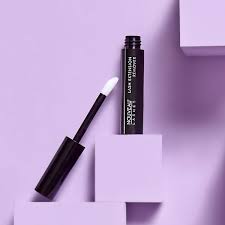Lash extensions have become a popular beauty trend, offering individuals the opportunity to enhance their natural lashes for a fuller, more glamorous look. However, as with any beauty treatment, there may come a time when one wishes to remove their lash extensions. This is where the magic of lash extension removers comes into play. In this comprehensive exploration, we delve into the world of lash extension removers, shedding light on their composition, application techniques, and the science behind their effectiveness.
Understanding Lash Extensions:
Before delving into the specifics of lash extension removers, it is crucial to understand the nature of lash extensions. Lash extensions are individual synthetic fibers or mink hairs that are carefully adhered to each natural lash, creating a lengthened and voluminous effect. These extensions are typically attached using a strong adhesive that ensures longevity and durability. However, when it comes time to remove them, a specialized remover is necessary to break down the adhesive bond without causing harm to the natural lashes.
Composition of Lash Extension Removers:
Lash extension removers are formulated with ingredients that target the adhesive used to attach the extensions to the natural lashes. The primary active ingredient in most removers is cyanoacrylate, the same bonding agent found in lash adhesives. This compound is chosen for its ability to efficiently break down the adhesive bond without causing damage to the natural lashes or skin.
Additionally, removers often include conditioning agents such as aloe vera, chamomile extract, and other soothing ingredients. These help mitigate potential irritation and nourish the natural lashes during the removal process. The inclusion of these conditioning agents is a key factor in ensuring a gentle and comfortable experience for the client.
Application Techniques:
The application of lash extension removers is a delicate process that requires skill and precision. Professional lash technicians are trained to use a micro-brush or a precision applicator to apply the remover directly to the bond between the extension and the natural lash. It is crucial to avoid contact with the skin and eyes, as the remover is potent and should only be applied where necessary.
The remover is left on for a specific duration, allowing it to penetrate and weaken the adhesive bond. The time required varies depending on the type of adhesive used and the specific remover being employed. After the allotted time, the lash technician gently uses tweezers or a specially designed tool to slide off the loosened extensions.
Science Behind Lash Extension Removal:
The science behind lash extension removal lies in the chemistry of the adhesive and the role of the remover in breaking down its molecular structure. Cyanoacrylate, the main component in both lash adhesives and removers, is a fast-acting polymerization agent. In simple terms, it forms strong bonds rapidly when exposed to moisture.
During the removal process, the lash extension remover works by introducing moisture to the cyanoacrylate bonds, causing them to break down. This process weakens the adhesive bond, allowing the technician to gently separate the extensions from the natural lashes without causing damage.
It's important to note that the effectiveness of the remover is influenced by various factors, including the type of adhesive used, the duration of wear, and the overall health of the natural lashes. Additionally, individual variations in skin sensitivity and reactions to the remover can impact the overall experience.
Choosing the Right Lash Extension Remover:
The market offers a plethora of lash extension removers, each with its unique formulation and characteristics. When choosing a remover, it is essential to consider factors such as the client's skin sensitivity, the type of adhesive used for the extensions, and the desired removal time.
Some removers are designed for quick removals, making them suitable for those with time constraints. Others are formulated with additional nourishing ingredients, ideal for clients with sensitive skin or those who have worn extensions for an extended period.
Professional vs. DIY Removal:
While lash extension removers are available for purchase by the general public, it is strongly advised that removal be conducted by a trained and experienced professional. DIY removal poses several risks, including the potential for eye irritation, damage to natural lashes, and incomplete removal of extensions. Professional technicians possess the necessary skills and knowledge to ensure a safe and effective removal process.
Conclusion:
In the realm of beauty and aesthetics, the art and science of lash extension removers play a pivotal role in ensuring a seamless transition from enhanced lashes to a natural look. Understanding the composition, application techniques, and the science behind these removers is essential for both beauty professionals and clients alike.
As the beauty industry continues to evolve, lash extension removers stand as a testament to the commitment to providing safe and effective solutions for those seeking to enhance and, when the time comes, return to their natural beauty. Visit official website thelashprofessional.com

